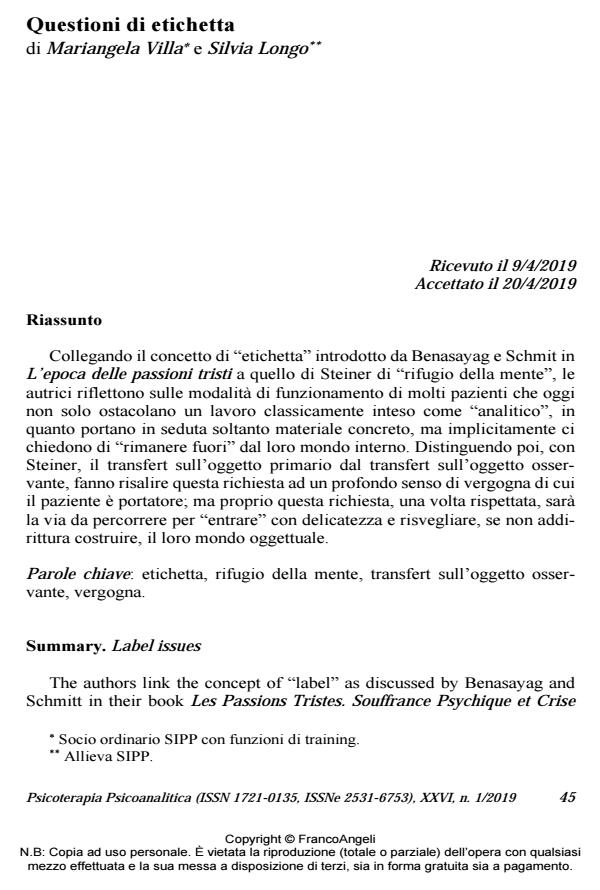Label issues
Journal title PSICOTERAPIA PSICOANALITICA
Author/s Mariangela Villa, Silvia Longo
Publishing Year 2019 Issue 2019/1
Language Italian Pages 21 P. 45-65 File size 220 KB
DOI 10.3280/PSP2019-001004
DOI is like a bar code for intellectual property: to have more infomation
click here
Below, you can see the article first page
If you want to buy this article in PDF format, you can do it, following the instructions to buy download credits

FrancoAngeli is member of Publishers International Linking Association, Inc (PILA), a not-for-profit association which run the CrossRef service enabling links to and from online scholarly content.
The authors link the concept of "label" as discussed by Benasayag and Schmitt in their book Les Passions Tristes. Souffrance Psychique et Crise Sociale with the concept of "psychic retreat" introduced by Stei-ner. They reflect on a type of mental functioning seen in several of their patients who, by carrying out a matter-of-fact discourse, not only hinder a classically defined "analytic" work, but also implicitly ask the therapist to "stay out" of their inner world. The authors, by distinguish-ing, along with Steiner, transference to the primary object from trans-ference to the observing object, ascribe this particular demand to a deep seated feeling of shame; at the same time they think that it is pre-cisely by going along with the patient’s demand to "stay out" that they can find a way to gently "get in" in order to awaken, if not even build, a world of internal objects.
Keywords: Label, psychic retreat, transference to the observing object, shame
Mariangela Villa, Silvia Longo, Questioni di etichetta in "PSICOTERAPIA PSICOANALITICA" 1/2019, pp 45-65, DOI: 10.3280/PSP2019-001004